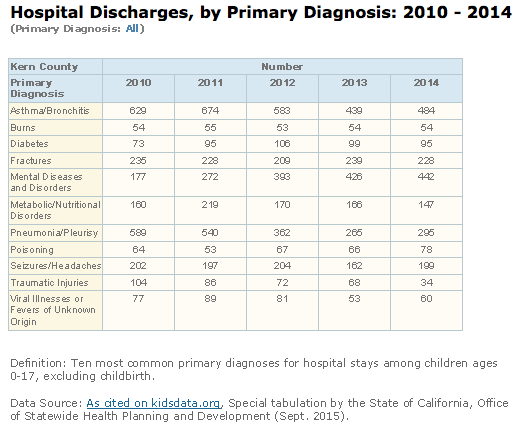
South Kern Sol, News Report, Marcus Castro
While elementary school districts and middle schools in Kern County have school nurses, the high schools have been left out. That could change if some in the community have their way.
“The high schools at this point, no matter how much we advocate, are not looking at adding nurses, but they truly need to for the safety of the kids,” said Student Health and Neighborhood Support Programs Coordinator Deborah Wood with the Bakersfield City School District. Wood has been a nurse for over 30 years.
Some 57 percent of school districts in California report having no nurse personnel. There are currently only four nurses serving over 35,000 students in the Kern High School District, the largest 9-12 high school district in California. The nationally recommended ratio is 1 nurse for every 750 students.
Considering the high number of Kern residents with diabetes, asthma and other health problems, having on-site nurses is all the more critical to ensuring students receive the case they need when they need it.
Kern County is ranked 57 in incidence of diabetes out of 58 counties in California, according Centers for Disease Control and Prevention, while asthma is the most common primary diagnosis for hospital stays among children. Diabetes ranks third.

Data from the National Association of School Nurses shows that having on-site school nurses — as opposed to health clerks — leads to increased attendance and improved academics, as well as improved health for faculty and staff and more time to focus on lessons.
Researchers also say that nurses hold schools more accountable, a key component of the Local Control Accountability Plan (LCAP), which districts are required to submit as part of the state’s new Local Control Funding Formula.
In place of on-site nurses, high schools in Kern County rely instead on on-site health clerks for immediate medical needs.
“Every school has a health clerk, and that person not only keeps records on the students but is also trained to take care of minor things,” said Arvin High School Principal Carlos Sardo.
Sardo explained his school also has a health center where students can go to rest or receive assistance when not feeling well. When students go to the health center, their parents will be contacted. If the issue is serious, the school will have to contact outside help.
“If it’s anything greater than that, a broken limb or a kid having chest pains, then we contact emergency health services,” said Sardo, adding he does support efforts to bring more nurses into the district.
Sardo noted that in addition to health clerks, high schools also have mental health professionals assigned to them.
“We have a mental health clinician that’s assigned to our school, and she works with our students who have a history of mental health needs,” said Sardo. “We also have a school psychologist on staff who does the same in trying to help assess what the needs are for students.”
The school has seven counselors that are trained in conflict mediation, according to Sardo. Arvin High School also has four community specialists that try to meet the student’s physical needs. He explained that the community specialists help students who are in need of clothes or a place to sleep.
Amy Greene is a Kern High School District nurse. She said once issues get to the district level, she and her colleagues make evaluations to determine the best course of action, including whether or not to make home visits.
Greene said she and her colleagues in the district are pushing for more nurses, and that they are in the process of creating a proposal, though they have yet to go before the board with it.
In the meantime, Kern students must continue to rely on health clerks
For Jocelyn Cuevas*, a junior at Golden Valley High School, that isn’t very reassuring.
“She [the health clerk] asked me if I wanted to go home, and she was already calling my mom,” said Cuevas, 17, adding it “felt like it was a teacher” she was speaking with and not a health professional.
*Jocelyn Cuevas is also a youth reporter for South Kern Sol.